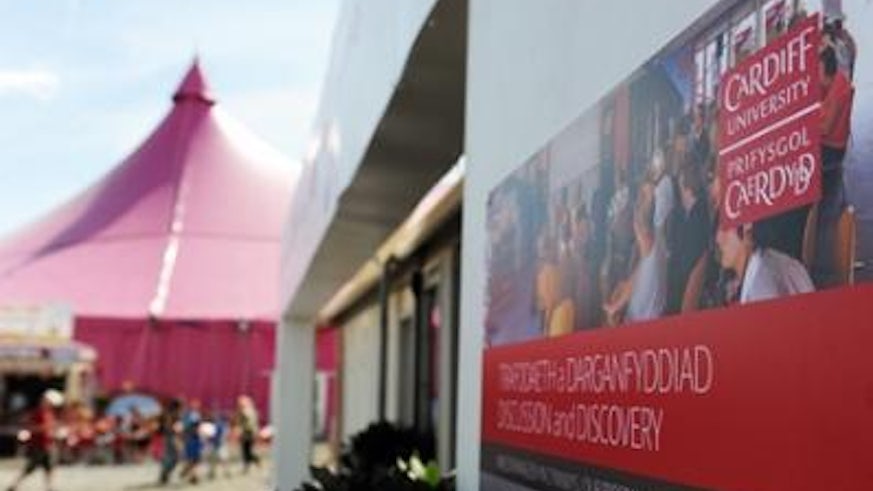University’s big impact at Eisteddfod
11 August 2014

Some of the key issues facing Wales have been under the microscope as part of a highly successful week for Cardiff University at this year's National Eisteddfod.
The University's pavilion on the maes has been packed with lively talks and debates on topical items such as the impact of Scottish independence on Wales and the future of Welsh journalism.
Highlights included Professor of Welsh politics at the University, Richard Wyn Jones, looking at how Wales would be affected by Scottish independence, only weeks ahead of the Scottish referendum on 18 September.
Another high-profile speaker was Director of Communications at News UK Guto Harri – who was Boris Johnson's former media advisor – talking about a News UK scheme which trains future journalists.
BBC Wales Welsh Affairs Editor Vaughan Roderick also made an appearance, talking to a panel about the effects of the Silk Commission, which reviewed the case for further devolution in Wales.
The Eisteddfod, one of Europe's largest cultural and artistic festivals, was staged at Llanelli in Carmarthenshire this year and ended on Saturday.
The University made sure local history was on the agenda as the origins of Sosban Fach, a folk song very closely associated with Llanelli and its proud rugby history, were traced by Professor Sioned Davies from the School of Welsh.
Other attractions included visitors examining a series of interactive exhibits at the University's Discover tent - such as the Otter Project, a long-term environmental surveillance scheme which uses otters which are found dead to help investigate contaminants, disease and population biology across the UK.
The University's Community Engagement Manager Bruce Etherington said: "It has been great to talk to visitors to the maes about the University's research and to listen to what they want from us.
"We have had some great discussions following the talks, including what the Scottish referendum might mean for Wales and the history of Sosban Fach.
"We have had alumni coming onto the stand reminiscing about their time at Cardiff and young people looking to explore their options for the future.
"As a Welsh learner, it has been great to spend time being surrounded by the language, and people have been great with my efforts to talk to them in Welsh."
Another success has been the launch of the first digital newspaper ever produced for the festival, called Llais y Maes, by the University's Centre for Community Journalism.
It is a bilingual website which was run by an editorial team of seven University students in partnership with the Eisteddfod.
The digital newspaper is part of the University's Community Journalism engagement project, which in turn is one of five flagship schemes which focus on social and educational inclusion and health in Cardiff, Wales and beyond.